What is TMJ / TMD?
Do you ever experience a clicking or popping sound when opening or closing your mouth? Have you been suffering from headaches or tired jaw muscles in the morning or during the day. Do you feel any clogging or congestion in one or both of your ears? These are just a few of many symptoms that might be associated with TMD, or Temporomandibular Dysfunction, a common condition affecting the jaw joint or Temporomandibular Joint (TMJ).
TMJ dysfunction, often referred to as TMD, is a disharmony between the way the jaw joint works in an unstrained position and the way the teeth and bite work during those movements. Possible causes of this disharmony include tooth loss, accidents (like whiplash), mal-positioned and/or underdeveloped cranial or jawbones, and perhaps habits like clenching or teeth grinding. Many people go through life suffering from headaches and a variety of facial and neck pains without knowing the ultimate cause, which in many cases is TMJ disorder.
TMJ or The Temporomandibular Joint
They are the two joints which connect the lower jaw to the temporal bone at the side of the head. If you place your fingers just in front of your ears and open your mouth, you can feel the joint on each side of the head. Because these joints are flexible, the jaw can move smoothly up and down and side to side, enabling us to talk, chew and yawn. When the TMJ is not functioning normally and it is not within its physiological limits, it creates a condition called TMD, or Temporomandibular Dysfunction.
TMD is a group of conditions resulting from not having a normal function or “comfortable” positioning of the TMJ, and will present as a cycle of pain, muscle spasms and jaw problems. When teeth are missing, out of alignment, crowded or misshaped, chewing and biting cannot be achieved in a balanced way, so the TMJ and the muscles of chewing try to compensate for this unbalanced movement which results in symptoms that will confirm the presence of TMD.
Temporomandibular Joint Disorder (TMD) is not just a disorder, but a group of conditions, often painful, that affect the jaw joint or Temporomandibular Joint (TMJ) and the muscles that control chewing.
TMD falls into three main categories:
Myofascial pain, the most common form of TMD, which is discomfort or pain in the muscles that control jaw functions and the neck and shoulder muscles.
Internal derangement of the joint, meaning a dislocated or displaced disc or injury to the condyle (the rounded part at the end of the jaw bone).
Degenerative joint disease, such as Osteoarthritis or Rheumatoid Arthritis in the jaw joint. Causes of TMJ/TMD.
Causes Of TMD
There are many causes for TMD such as:
- Unbalanced occlusion or ‘Bad Bite’
- Stress (emotional or work/school related)
- Injury or trauma (this could have been an injury as obvious as a blow to the jaw with a fist or something as subtle as a whiplash injury with direct trauma to the head or jaw.)
- Teeth grinding or Bruxism
A ‘Bad Bite’ could be caused by any of the following:
- Missing teeth
- Crowded or ‘crooked’ teeth
- Worn down teeth
- Old crowns and bridges
- Unbalanced dentures
When teeth are missing, or out of alignment, it causes the jaw to shift positions and the muscles to work harder to chew, swallow, bite, etc. and eventually will cause: muscle spasms, tension and pain.
Muscle tension and misplaced TMJ could cause the TMJ disc to be pulled out of place which will result in pain, clicking and popping in the TMJ.
If the disc is displaced for a long time, the bones will start rubbing against each other and some damage will happen to the bone, this is called Osteoarthritis.
If there is inflammation in other joints or bones of the body, it is called Osteoarthritis (Arthritis) which may involve the jaw bone and the TMJ. Some damage to the bone may be evident on the x-rays.
TMD Symptoms
To help diagnose a TMJ disorder, you want to look for the following symptoms that are generally related to TMD.
- Jaw pain
- Jaw clicking
- Limited mouth opening
- Jaw locking
- Face pain
- Eye pain
- Ear pain
If you are experiencing any of these symptoms, please call our office at (406) 637-4948 and we’ll be happy to discuss them further and talk possible treatments that are available and would work best for you.
Headaches
If you suffer from frequent head or facial pain, an incorrect bite may be the cause due to constant cranial muscle strain. Headaches from dental stress are a type of muscle tension headache. A tension headache may be on one or both sides of your head and feels like a dull, non-throbbing ache that can usually be relieved by aspirin or ibuprofen.
When you swallow, your upper and lower jaw muscles must hold your jaw firmly against the skull. Between swallowing over 2,000 times a day and a poorly aligned bite, the jaw muscles can overwork causing muscle strain which in turn leads to a headache. Some people who suffer from chronic headaches clench their jaws in a balanced, centered position. This causes extremely intense muscular contraction, but little strain on the jaw. Nighttime jaw clenching usually goes unnoticed but it sets the stage for chronic headache pain.
TMJ Treatment
Good news!
Luckily, TMJ/TMD is treatable most of the time.
Simple cases of TMJ can be treated with anti-inflammatory medications such as ibuprofen. Icing the sore jaw muscles and stretching the muscles followed by use of a hot/moist compress. Sometimes taking a muscle relaxer for a short period of time is indicated.
Bite Splints
Bite splints (plates) are effective in relieving TMD symptoms.
A bite splint provides an acrylic platform to bite against. Some bite plates move the mandible to a new position.
Generally, splints are worn part-time and for most people night time seems to be the best time to wear them.
A bite splint can also help prevent wearing down of the teeth—loss of enamel on the biting surface.
The dentists at Family Dental Group are not TMD specialists but do offer the above therapy.
Treatment for more complex cases will require referral to a dentist or a physical therapist who specializes in TMD. Specialists in TMD treatment may use the following protocol.
Phase I:
Generally speaking, it includes the fabrication of an orthotic. An orthotic is an acrylic device that is worn on the lower teeth 24 hours a day. The orthotic is designed to reposition the jaw to the correct neuromuscular position.
First we analyze the bite, decide which muscles are causing the pain, and where the current position of the bone is and the disc. All this is done with the aid of advanced equipment like the TENS unit, K7 jaw tracking, Sonography, EMG’s and advanced x-rays like Tomography, CT Scans and MRI’s of the TMJ.
This will help us determine the best and most comfortable position of the TMJ and the muscles. Once that position is determined, we place the orthotic on the lower teeth to keep the TMJ in that position.
Orthotics usually are worn for 4-6 months or until most of the symptoms are relieved. Once an orthotic is in use, the symptoms start gradually disappearing until we reach a point that both the doctor and the patient are satisfied with. This concludes Phase I of the treatment.
Phase II:
After 4-6 months of relief and when the patient is no longer suffering from any TMD symptoms, Phase II will be considered. Phase II includes any of the following:
- Wearing a long term removable orthotic, full time or part time.
- Replace missing teeth.
- Orthodontic treatment (Braces).
- Restore all the lower and/or upper teeth with crowns and veneers to preserve the optimal occlusion (bite) that was achieved with the orthotic in phase I.
Most of the time, any of the above could be considered and chosen, depending on the patients’ preferences and financial capability. If you are currently suffering from TMD, it is too early to think of phase II at this time, since it is important to get you out of your pain and symptoms.
Special cases:
Denture patients with TMJ/TMD: Many patients complain that when they received dentures, they noticed pain in the jaw, headaches, ear problems and other symptoms. Sometimes taking the dentures out will relieve those symptoms.
If your dentures are not made to the correct bite, or vertical dimension, it will most likely cause these symptoms. Simple adjustments could get rid of these symptoms, but sometimes a whole new set of dentures need to be made according to the neuromuscular principles, to get rid of your headaches or jaw pain.

